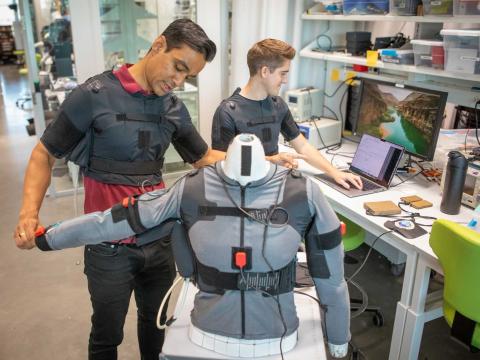Artificial Intelligence-Driven Components Helping Advance EMS Space
The electromagnetic spectrum (EMS) realm is becoming increasingly crucial to winning the future fight, and to address it, military officials are working to integrate new technologies and strategies into the EMS infrastructure to ensure its effectiveness and reliability. To accomplish this, U.S. military personnel are using three new AI-driven elements to improve responsiveness and reduce the workload in the EMS, according to Bob Marcial, chief spectrum manager at U.S. Pacific Command.
Firstly, officials are taking advantage of models that are designed to predict patterns in the EMS. By utilizing these frameworks, servicemen and women can now anticipate interference in the EMS, giving them the ability to optimize frequency allocation, according to Marcial.
Secondly, they are using tools that resolve conflicts automatically. These AI-based technologies are rapidly settling frequency deconfliction without the need for human assistance.
And finally, military personnel are taking advantage of the opportunity to have dynamic spectrum access. This capability automates the entire spectrum so that officials can conduct real-time spectrum management, according to Marcial.
“Right now, what we have are a lot of Excel spreadsheets, but AI is helping us do real-time spectrum management,” Marcial said during a panel covering the electromagnetic operational environment at TechNet Indo-Pacific 2025 in Honolulu.
Additionally, one Army group is leading the charge of developing waveform-adapting capabilities, which is “key,” according to one official.
“Certain or various vendors or capability developers in our field understand that waveform interoperability is key for interoperability with joint coalition partners,” Lawrence Orlosky, chief spectrum manager at the Army Service Component Command for the U.S. Indo-Pacific Command, said. “Nothing changes with regard to the EMS—you still have the same frequency [and] the same bandwidth that’s there—[it’s about] how to efficiently use that and to increase your capabilities in the same place [and] in the same time. That’s primarily what we’re trying to leverage waveform management and waveform adaptation for, so I think that forthcoming capability is very interesting; I think that’ll be very significant to our progress on that.”
As aforementioned, the race to EMS superiority is crucial. Panelists stressed that spectrum has an extensive reach in the daily lives of individuals.
“Spectrum does a lot more than we think about it,” Col. Will Macugay, director of J65 at the U.S. Indo-Pacific Command, said. “[It’s not] just communications or data transmission, but it’s also a microwave; it’s your ability to see; it’s a lot of other things you don’t think about.”
“Without spectrum, nothing exists anymore in the 21st century, so you use it every day, but you’re not realizing that you’re using spectrum all day long, so it’s critical,” Marcial said.
TechNet Indo-Pacific is organized by AFCEA International and AFCEA Hawaii. SIGNAL Media is the official media of AFCEA International.




Comments